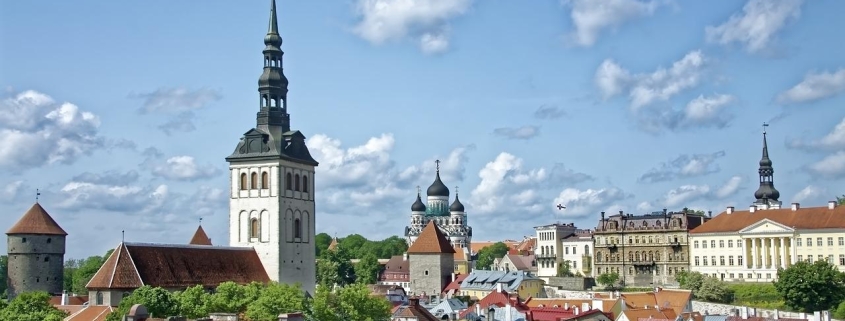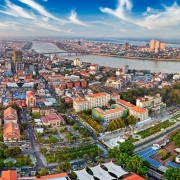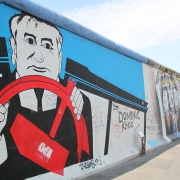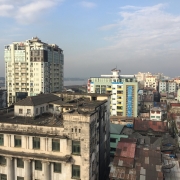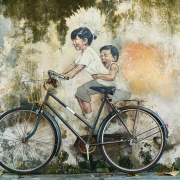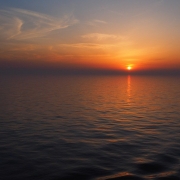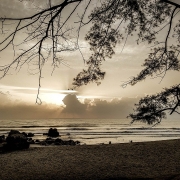What was the Singing Revolution in Estonia?
Topic of Study [For H2 and H1 History Students]:
Paper 1: Understanding the Cold War (1945-1991)
Section A: Source-based Case Study
Theme I Chapter 3: End of Bipolarity
Historical context: Oppression
For centuries, the Baltic Republics like Latvia, Lithuania and Estonia were under Soviet occupation. Under the Molotov-Ribbentrop Pact signed by Hitler and Stalin in 1939, the Soviet Union conquered these Baltic republics. Although there was armed resistance (‘Forest Brothers‘) in the early post-WWII years, the Soviets have successfully put them down by 1953.
People joined the resistance movement not as an indication of social rank, but from a desire to stand up against the foreign power that had conquered their homeland. The young people raised in their own free country refused to accept a future without a free and independent Estonia. Most of the population reacted to the invaders instinctively with resistance.
An excerpt from “War in the Woods: Estonia’s Struggle for Survival, 1944-1956” by Mart Laar and Tina Ets.
From 1950s to the 1970s, Estonia went through a policy a ‘Russification‘, which suppressed Estonian culture. By law, nationalist sentiments were suppressed, including attempts to fly the Estonian flag.
A decade of change: Rise to the occasion
When Soviet leader Mikhail Gorbachev rose to power in March 1985, his twin reforms in the form of perestroika and glasnost have created the impetus for Estonians to push for political reforms.
By the mid-1980s, the Estonians have organised themselves and took part in a non-violent movements, demanding for independence. Given that Estonia was known for its culturally rich tradition, the people gathered in large numbers, breaking into song. This was known as the ‘Singing Revolution‘.
The campaign for independence was not just political, but born from a desire to protect and promote nationhood through language, culture and music. Estonia, like the other Baltic States, had a long history of song festivals and large open-air concerts, which brought the nation together. In May 1988 an open-air rock concert in the university town of Tartu became the first place where the black, blue and white colours of the previously banned Estonian national flag were waved. Soon, national singing competitions were occasions for spontaneous mass singing of patriotic songs.
An excerpt from “The Cold War: A New Oral History of Life Between East and West” by Bridget Kendall.
In particular, the people sang national songs that were not allowed since the Soviet occupation. In May and June 1988, the singing was led by musicians, who inspired thousands of attendees that joined hands and reciprocated in unison.
In September 1988, nearly 300,000 people attended a large-scale song festival in the capital Tallinn. There were calls for the restoration of Estonian independence.
The tipping point: Declaration of sovereignty
By then, the ruling Communist Party of Estonia also called for greater political autonomy. On 16 November 1988, the government asserted Estonia’s sovereignty, putting an end to the longstanding Soviet occupation in Estonia. The final stage of the Cold War had finally arrived.
On 16 November 1988, the Supreme Soviet of the Estonian Republic adopted a “Declaration on the Sovereignty of the Estonian SSR,” its first major step toward independence. Moscow declared this move unconstitutional but was not prepared to use force to overturn the Estonian government. By the time the Kremlin formally accepted economic autonomy for the Baltic states, in January 1989, public opinion was rapidly shifting towards independence. The autonomy offered by Gorbachev in early 1991, couched in a new Union Treaty, was considered to be fake and a desperate attempt to keep the USSR together.
An excerpt from “Political Parties of Eastern Europe: A Guide to Politics in the Post-communist Era: A Guide to Politics in the Post-communist Era” by Janusz Bugajski.
What can we learn from this article?
Consider the following question:
– Assess the view that popular movements were the main cause of the End of Bipolarity.
Join our JC History Tuition to learn more about the End of the Cold War. The H2 and H1 History Tuition feature online discussion and writing practices to enhance your knowledge application skills. Get useful study notes and clarify your doubts on the subject with the tutor. You can also follow our Telegram Channel to get useful updates.
We have other JC tuition classes, such as JC Math Tuition and JC Chemistry Tuition. For Secondary Tuition, we provide Secondary English Tuition, Secondary Math tuition, Secondary Chemistry Tuition, Social Studies Tuition, Geography, History Tuition and Secondary Economics Tuition. For Primary Tuition, we have Primary English, Math and Science Tuition. Call 9658 5789 to find out more.

